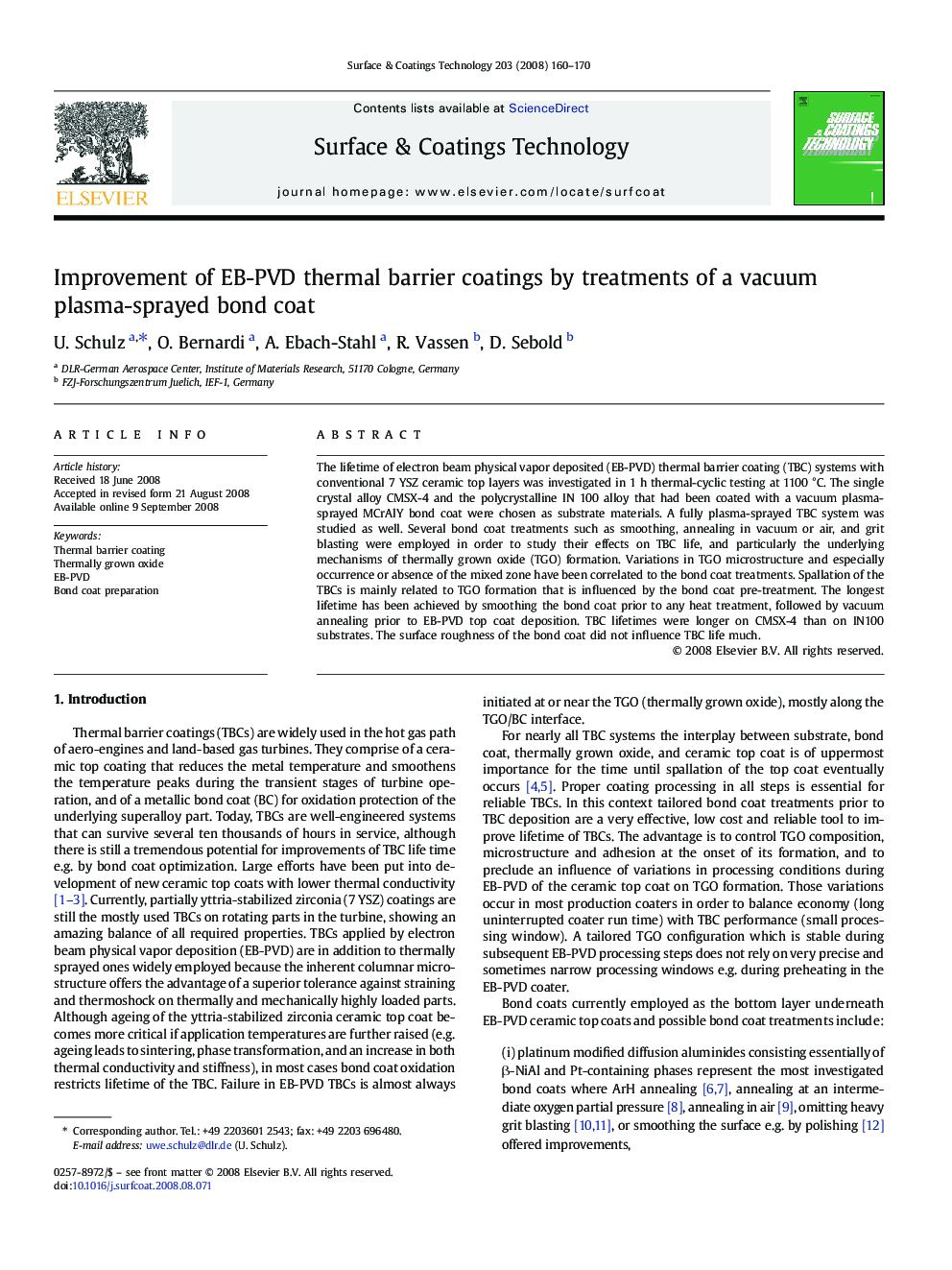| Article ID | Journal | Published Year | Pages | File Type |
|---|---|---|---|---|
| 1661272 | Surface and Coatings Technology | 2008 | 11 Pages |
The lifetime of electron beam physical vapor deposited (EB-PVD) thermal barrier coating (TBC) systems with conventional 7 YSZ ceramic top layers was investigated in 1 h thermal-cyclic testing at 1100 °C. The single crystal alloy CMSX-4 and the polycrystalline IN 100 alloy that had been coated with a vacuum plasma-sprayed MCrAlY bond coat were chosen as substrate materials. A fully plasma-sprayed TBC system was studied as well. Several bond coat treatments such as smoothing, annealing in vacuum or air, and grit blasting were employed in order to study their effects on TBC life, and particularly the underlying mechanisms of thermally grown oxide (TGO) formation. Variations in TGO microstructure and especially occurrence or absence of the mixed zone have been correlated to the bond coat treatments. Spallation of the TBCs is mainly related to TGO formation that is influenced by the bond coat pre-treatment. The longest lifetime has been achieved by smoothing the bond coat prior to any heat treatment, followed by vacuum annealing prior to EB-PVD top coat deposition. TBC lifetimes were longer on CMSX-4 than on IN100 substrates. The surface roughness of the bond coat did not influence TBC life much.
